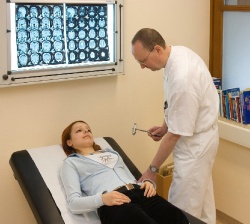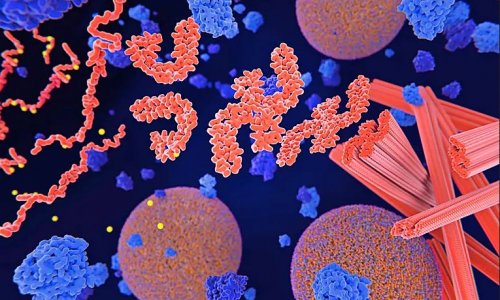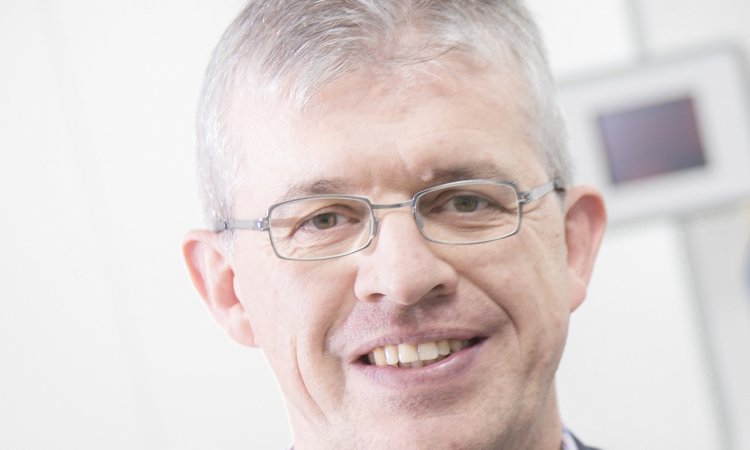Neurological diseases on the rise
„Diseases of the nervous system and the brain occur more frequently than cancer. According to recent calculations of health care costs, they represent a burden of 386 billion euros a year on European economies,“ says Prof. Gérard Said, newly elected president of the European Neurological Society (ENS) at the annual meeting in Berlin, Germany. „This is often greatly underestimated.“


Around 50 million people in the EU area suffer one or more neurological diseases, according to figures published by the WHO in its „Neurology Atlas“. The incidence is on the rise. The European Brain Council estimates a 20% increase in these diseases in coming years. The number of patients suffering dementia or Parkinson's disease alone is expected to double during this period. „Despite these dimensions, diseases of the brain and nervous system receive less public attention and funds than do for instance cancer or cardiovascular diseases,“ says Prof. Said. „However it is to be welcomed that our efforts to increase awareness have borne fruit, and the EU in recent years has attached more importance to this theme, while brain research is specifically mentioned in the 7th Framework Programme.“
Migraine is high on the list of the most common neurological diseases. According to the European Brain Council, around 41 million Europeans suffer from these stressful chronic headaches. Around 4.8 million people in the EU area suffer from some form of dementia, around 2.6 million from epilepsy, 1.2 million from Parkinson's disease, and around a million people a year suffer stroke.
This all represents a major burden on national economies. Around a third of European health care costs can be ascribed to neurological diseases. Prof. Said, in consequence, has called for an increase in funding in the areas of basic research, the development of new methods of treatment and training of neurologists.
Neuropathy: a widespread disease seriously underdiagnosed
The incidence is often underestimated, but with 20 to 30 million people worldwide affected by this very widespread disease, the various forms of neuropathy are one of the special topics at the neurologists' congress currently underway.
In light of the steady increase in so-called diseases of civilisation, diabetic neuropathy, which affects more than one in three diabetics, represents a particular challenge to health care policy and medical practitioners. „The number of underdiagnosed and undertreated cases of diabetic neuropathy is very high, according to numerous international data,“ says Prof. Said. „This is especially problematic because early diagnosis and consistent treatment can often prevent dramatic consequences such as amputation.” Sensorimotor diabetic neuropathy is still the most important risk factor for non-accident related amputation of the lower extremities. With most serious consequences: such an amputation according to the latest data from the American Diabetes Association carries a 50% risk of mortality within three years and from 60 to 70% within five years.
Immune mediated neuropathy: new insights into pathogenesi
While the underlying disease mechanisms of diabetic neuropathy are understood, they are much less clear for other less common forms of neuropathy. This is especially true for the rarer disease, immune mediated neuropathy, the course of which is often dramatic, and which is the subject of a special symposium. In this disease, a malfunction of the immune system damages nerve fibres, especially the myelin sheath which enclose the nerve fibres. The most commonly occurring form of immune mediated polyneuropathy is Guillan-Barré-Syndrome, a disease which causes paralysis of the arms and legs, and which can lead to respiratory paralysis. Another form is chronic inflammatory demyelinating polyneuropathy (CIDP). This often presents together with HIV infection, diabetes or hepatitis C. Paralysis in the legs and a swaying unsteady gait are typical of this disease. Most patients with immune mediated polyneuropathy require intensive medical care during the acute phase of the disease, and often require years to recover from the paralysis.
At the ENS Meeting, Prof. Said also presents new insights on vasculitis, a group of disorders in which autoimmune processes lead to inflammatory destruction of blood vessels and consequent damage to the organs they supply. „In some forms of vasculitis, autoantibodies directed against structures of the patient's own body are responsible,“ says Prof. Said. These are primarily antineutrophile cytoplasmic antibodies (ANCA). In other forms of vasculitis, so-called immune complexes cause the inflammation of blood vessels. The capacity of the antibody to activate certain protein structures of the immune system, the so-called complement system, causes inflammation of the affected vessels.
Immunoglobulin soon administered subcutaneously, not just intravenously
Treatment of this form of neuropathy remains a particular challenge to neurologists. In recent years, it has been demonstrated that use of intravenous immunoglobulin (IVIG) is an effective option for treatment of immune mediated neuropathy. The drug, manufactured in a complex process from donated plasma, acts on various regions of the immune system and has noticeably few side effects. A new study by British, Italian and Swiss researchers presented at the ENS congress in Berlin provides evidence that administering immunoglobulin subcutaneously may in future be an attractive alternative. „The new subcutaneous treatments, which are as effective or more so than IVIG, appear an attractive alternative, since patients don't have to come to hospital for transfusions, allowing them to maintain greater flexibility,“ says Prof. Said.
Autologous peripheral stem cell transplantation, which has primarily been used to treat leukemia, is also now being tested as treatment for CIDP. “We have to make sure that neuropathy patients for whom these innovative treatment methods are appropriate, also actually have access to these treatments,“ says Professor Said.
Source: ENS Presidential Symposium: Autoimmune disorders of the peripheral nervous system and muscle
Picture source: KH Schwarzach
21.06.2010






